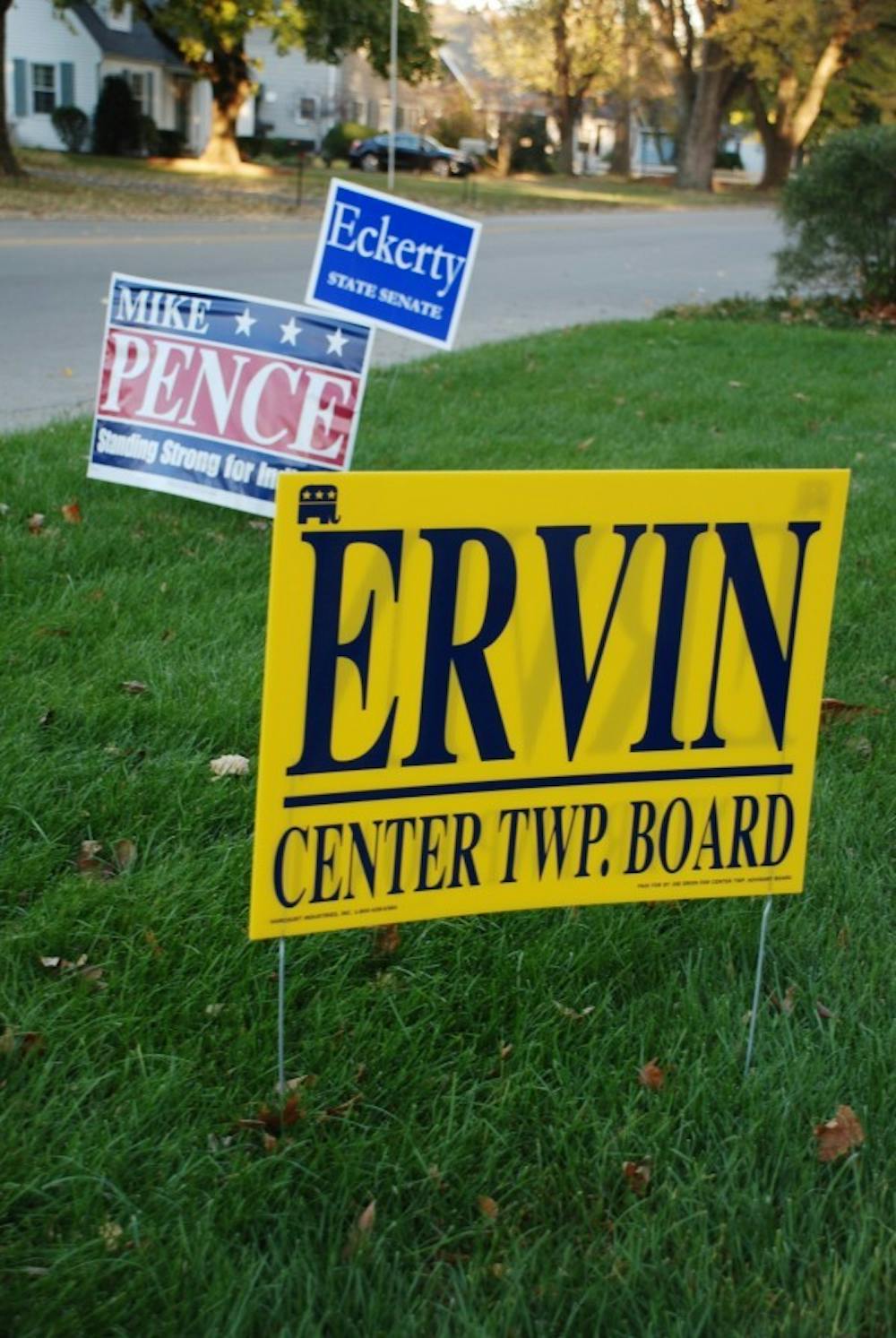After a rise in the number of young voters in the 2008 presidential election, the question remains whether the youth vote will return for Tuesday's midterms.
While some may be worried by the apparent lack of voter interest, particularly in college students, it might not be as bad of a sign of apathy as it seems.
"The challenge is more people are interested in the presidency," said Mitch Isaacs, associate director of Student Life. "When you get into the midterm election, when you don't have the one singular race to focus on, it's harder for people to get motivated."
In 2006, out of the 85,389 registered voters in Delaware County, only 34,509 actually voted. By comparison, the 2008 presidential election brought 50,964 voters out of 89,945 who registered.
This year, early voting in Delaware County closed with about 3,800 votes, less than the 4,022 votes in the 2006 election, said Delaware County Clerk Steven Craycraft.
Without the appeal of the presidential race, this year's midterm turnout is widely expected to be lower than 2008.
Isaacs said despite the lack of glitz for the midterm election, student interest at Ball State has been good overall, even with seemingly low turnout to election-related events. A Student Government Association forum last week brought in around 20 to 25 people, which Isaacs said shouldn't be disconcerting.
"For what the program was, it was a pretty solid turnout," he said. "It's very easy to get caught up in the numbers. One of the things universities should be doing is providing opportunities."
The various student political groups on campus have been working for months to raise awareness of the importance of the midterm election with varying reaction from students. Nolan Born, University Democrats president, said it's difficult to get an exact idea of the effect these events are having on student voter interest.
"It's hard to judge exactly," Born said. "A lot of what we've been doing is calling people and giving them information and telling them why the election matters. I feel like students responded well to them. We just did an event Thursday where we were at the Scramble Light passing out information. I think students responded well to that."
Holly Gillham, College Republicans public relations chairwoman, said it's difficult to measure student voter interest and the effectiveness of various "Get Out the Vote" programs before results are in because most students will not say if it influenced their opinions.
"What we're seeing is more through actions," she said. "For instance when we're standing out at the Scramble Light, we have some students and adults passing through the area honking their horns."
Gillham said any attention or reactions the various political groups on campus receive from students - good or bad - is still a sign of interest, even if that means being flipped the bird.
"I actually was given the finger twice [Friday], but I'm OK with that," she said. "It's at least showing people that we're there and we're saying something and they're forced to think about it. I don't mind so much being jeered, but I do hope the people who are jeering at us aren't jumping to conclusions and are doing their research."
Whatever the turnout is today, Isaacs said to remember one thing.
"What I hope the students don't do is fall into the trap of comparing 2010 to 2008," he said. "What you have to do when thinking about these things is keep context in mind. It's natural to compare 2010 to 2008. 2008 was a historical election for so many reasons. That kind of election is a ‘once-in-a-generation' election. 2010 doesn't have those elements, but it's still important."
Gillham and Born stressed the importance of making the trip to the polls.
"Democracy only works when people get involved and voice their opinions," Gillham said.
"Voting in the midterm election may not seem as sexy and students may not be as enthused, but it's still very important if you have democratic value," Born said.



